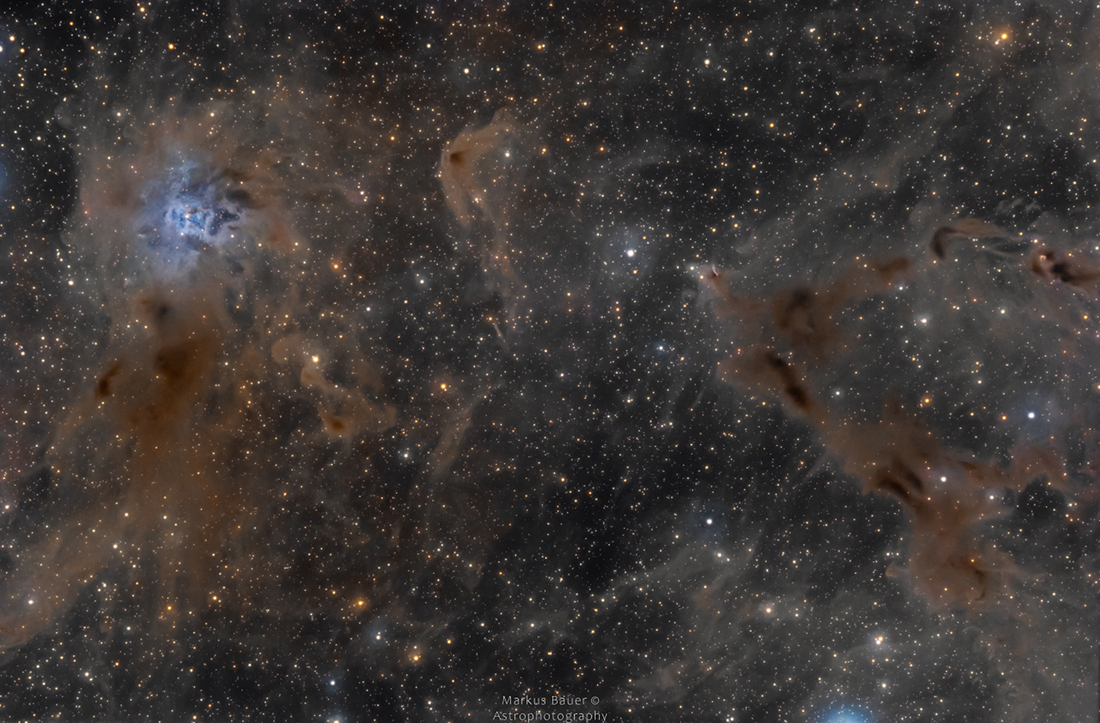尘埃场内的鸢尾花星云
2019 September 12
The Iris Nebula in a Field of Dust
Image Credit & Copyright: Markus Bauer
Explanation: These cosmic dust clouds drift some 1,300 light-years away along the fertile starfields of the constellation Cepheus. The beautiful Iris Nebula, also known as NGC 7023, blossoms at the upper left. Not the only nebula in the sky to evoke the imagery of flowers, its pretty, symmetric form spans about 6 light-years. This nebula’s dominant blue color is characteristic of the pervasive dust grains reflecting light from a nearby hot, bluish star. But darker, obscuring dust clouds cover most of the nearly 4 degree wide field of view. At the right is the LDN 1147/1158 complex of Lynds Dark Nebulae. Stars are forming there, still hidden within the dark cloud cores. A search through the sharp image can identify Herbig-Haro objects though, jets of shocked glowing gas emanating from recently formed stars.
尘埃场内的鸢尾花星云
影像来源与版权: Markus Bauer
说明:这些宇宙尘埃云距离我们约1,300光年远,漂移在富饶的仙王座星场内。这个亦称为NGC 7023的美丽鸢尾花星云在影像左上方绽放。它并不是天空中唯一一个能让人联想到花的星云,其壮丽、对称的外形结构跨越了约6光年的天区。该星云特有的蓝色色泽是遍布四处的尘埃颗粒反射附近一颗炽热蓝色恒星的星光所致。但这个较暗的模糊尘埃云覆盖了将近4度宽视场的大部分区域。影像右侧是林茨暗星云的LDN1147/1158复杂体。恒星正在那里形成,仍然隐藏在暗星云的核心中。通过对这幅清晰影像的搜索,我们可以识别出赫比格-哈罗天体,它是由最近形成恒星发出冲撞炽热气体产生的喷流。

